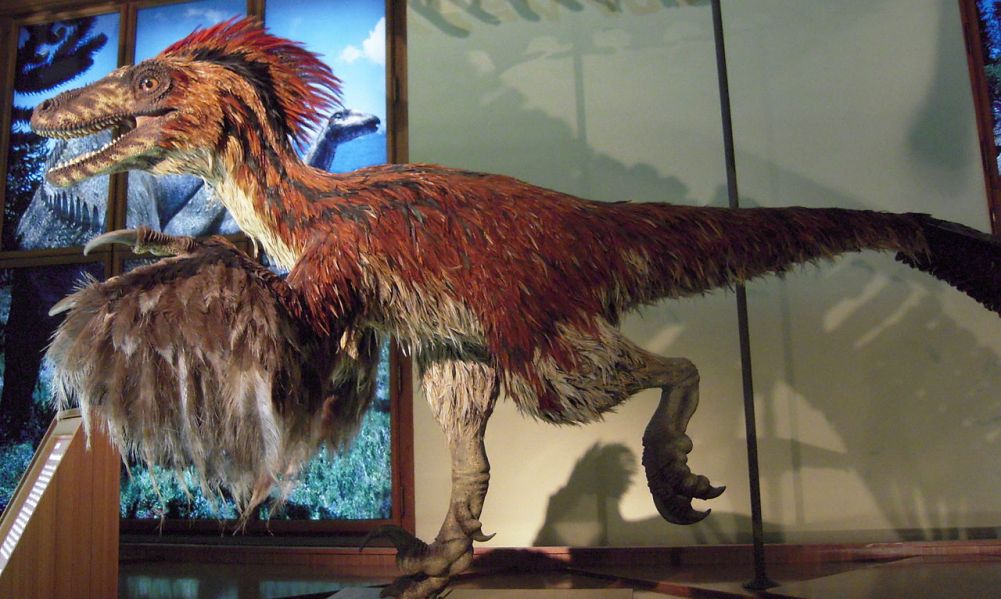
This feathered model of Deinonychus created by Stephen Czerkas for the Vienna Museum reveals what Velociraptor would have looked like. Don’t expect anything like this to appear in the next installment of Jurassic Park though. (Image: Wikimedia/Domser)
The fourth installation of the Jurassic Park movie series, Jurassic World, is being filmed in Hawaii and New Orleans right now, and is due to hit cinemas in June 2015. But the film has courted controversy for a number of reasons, not least for the suggestion that its representations of dinosaurs are inaccurate and not based on current science.
It may come as a surprise to hear that we have discovered that majority of what we know about dinosaurs since the first film hit cinemas in 1993. What we knew before then now pales into insignificance compared to what we’ve learned since the first feathered dinosaur Sinosauropteryx prima was discovered in China in 1996.
More than 40 species of feathered dinosaur have now been discovered in China, and they’ve shown us that carnivorous dinosaurs from all over the world were very probably feathered, even if their fossils retain no traces of them.
Golden age of dinosaur discovery
Currently around one species of dinosaur is discovered every week – most in China, Mongolia, South America and Africa, revealing that we really are in the golden age of dinosaur science.
Though Jurassic Park author Michael Crichton could have had no idea when he penned the book in 1990, we now know that Velociraptor, and its North American counterparts Deinonychus and Dromaeosaurus, may have had long feathers on their forearms – in effect small wings. These may have helped them work as a pack to bring down larger herbivores; these proto-wings would have provided a bit of lift as the animals ran and leapt into the air, vicious sickle claws outstretched.
The photo above is a life-size reconstruction of Deinonychus created by Stephen Czerkas for the Vienna Museum of Natural History, in Austria, and reveals the animal to have been fully feathered, very much as experts now believe this species and Velociraptor would have looked in life.
What would a feathered Velociraptor look like?
We know that Velociraptor had large feathers on its forearms because in 2007 a team of scientists, including Dr Mark Norell at the American Museum of Natural History in New York, showed that a specimen excavated in Mongolia in 1998 had clear ‘quill knobs’ pitted into its forearms. On the arm bones of modern birds, such as pigeons, these knobs are the attachment point for large flight feathers.
“The more we learn about these animals, the more we find that there is basically no difference between birds and their closely related dinosaur ancestors like Velociraptor,” Mark told reporters when the discovery was announced. “Both have wishbones, brooded their nests, possess hollow bones, and were covered in feathers. If animals like Velociraptor were alive today our first impression would be that they were just very unusual looking birds.” … CONTINUE READING